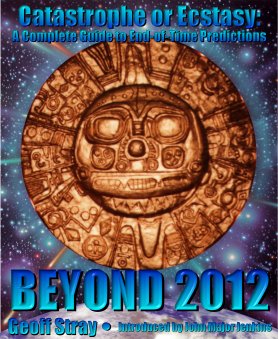The calendar of the ancient civilization ends Dec. 21, 2012.
In these times of economic distress, participants shelled out $300 each to attend the sold-out 2012 Conference, where astrologers, UFO fans, shamans and New Age entrepreneurs of every stripe presented their dreams and dreads in two days of lectures, group meditations, documentaries and, of course, self-promotion.
Normally, New Age platforms attract the interest of only the narrowest group of enthusiasts. But this one has been generating wider audiences because it so forcefully underscores the turmoil of the times, as indicated by the stock market plunge, Iran's nuclear ambitions, the Sept. 11 attacks, global warming and the possibility of a magnetic pole shift and stronger sunspot cycles.
To some, the end of the Maya Long Calendar's roughly 5,000-year cycle portends calamity, or the birth of a new age, or both.
The conference's slogan: "Shift happens."
The gathering of about 300 people from as far away as Holland was launched with the blessings of a Guatemalan shaman and the scary predictions of Jay Weidner, whose firm, Sacred Mysteries, has sponsored four 2012 events in the last six months.
"The greatest crisis in human history is unfolding all around us. It's not the end of this world, but it's the end of this age," he likes to say. "To survive the 21st century, we're going to have to become a sustainable world--people should want to know how to pound a nail, milk a cow and grow their own food."
Now, a gold rush of "2012ology" is underway. A similar conference in Hollywood this year drew an audience of more than 1,000. At least two gatherings are planned for the Los Angeles area in the spring. "A Complete Idiot's Guide to 2012" was published last month, adding to a burgeoning market of books, CDs and History Channel specials suggesting that the ancient Maya predicted the impending end of the world as we know it.
Director Michael Bay is set to make a movie titled "2012," based on a novel about multiple earths in parallel universes slated for destruction.
Maya researcher John Major Jenkins drew enthusiastic applause from the crowd with a lecture in which he said that Maya hieroglyphics are rife with images of trees and animals that represent the center of the Milky Way galaxy and what he called "the Black Hole of Maya Creation mythology."
That kind of talk irritates Boston University's William Saturno, a leading authority on the Maya, who did not attend the conference. Saturno dismissed the 2012 movement as "this year's Nostradamus."
The ancient Maya civilization flourished in southern Mexico, Guatemala, El Salvador and Honduras, and lasted nearly 2,000 years from before the time of Jesus until the Spanish conquest in the 16th century. The culture's achievements included soaring pyramids, a highly accurate calendar and intricately carved stone monuments.
"I had a guy come into my office once to ask me a question about a specific Maya mural with a depiction of a hanging nest in it," he recalled. "He claimed it was the exact form of a Maya Black Hole. I said, 'Nah, I'm thinking it's a bird nest.'"


No comments:
Post a Comment